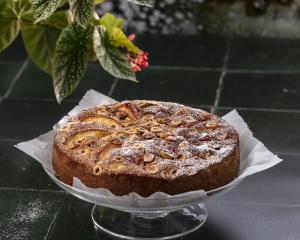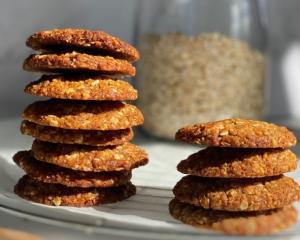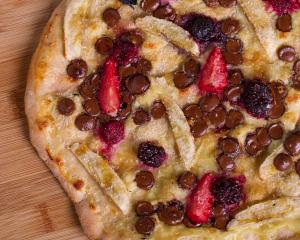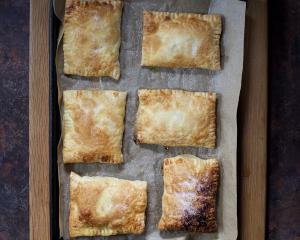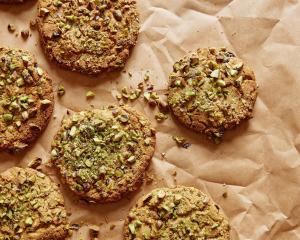Slices of roast meat, covered in gravy and accompanied by crunchy roast potatoes.
Variations of this dish have been served to families around New Zealand for decades, centuries even.
New Zealand became well known for its traditional lamb roast but it was in fact beef roasts that graced the table of the majority of New Zealanders in the early days, Emeritus Prof Helen Leach, of the University of Otago, said.
Early menus showed it was often served with horseradish sauce, potatoes and cabbage.
She believes the myth of the great lamb roast came from tourists visiting country stations where mutton was served, sometimes at each of the three meals in a day.
''They'd have the offal for breakfast, the cold meat for lunch and the roast for dinner. They knew how to roast virtually all the components.''
Lamb roasts did not feature on the weekly menus except for Christmas time, the Kitchens author said.
''I looked at the export figures and we exported 95% of our lamb, so we preferred wether mutton and hogget.''
Prof Leach remembers eating roasted sheepmeat as a child for the weekly roast.
''[Roast] beef was a special occasion and pork was even more rare.''
The Sunday roast was the nicest meal of the week, one the whole family was there for and often guests were present, she said.
''There was great conviviality. We were occasionally allowed a sip of sherry if guests were there.''
Things started to change in the 1970s, highlighted by Alison Holst's classic recipe book Lamb for all seasons.
''There was a big shift going on towards lamb and there were a lot of lamb recipes and more books.''
Then chicken caught up and passed red meat as the roast of choice as lamb prices rose.
In its original form, a roast was a piece of meat cooked over radiant heat fire on a spit - rotisserie style - not baked in the oven as we do today.
Various devices were used in the 16th and 17th centuries to turn the ''jack'' which turned the roasting meat - from little dogs in cages to kitchen boys, she said.
When the coal range emerged in Britain in the 1780s it had an open grate so people could roast their meat.
Over time it was decided it was safer and more economical to close in the range but it had no capacity to ''roast'' meat and so sometimes people put in two ovens - a baking oven and a roasting oven.
''So this isn't true roasting at all to put meat in the oven. Yet we didn't want to change the name so we continued to have ''roasts'' on a Sunday - but we were in fact baking them.
''Technology caught up and passed the tradition yet roasts were so important we couldn't bear to call it baked meat.''
However, she suspects the change from rotisserie to baking meant more exposure to overheated fat - in the great roasting spits the fat dripped into a cool pan - and the result was that cardiovascular disease was the biggest killer of men during the 1920s.
''I suspect our love of frying, and we loved oven roasting. We fried many things. Breakfast was fried, leftover roast meat was turned into patties and rissoles and fried. The menus in kitchens indicate that.''
Today, the roast was still a favourite meal but as families got smaller and meat became more expensive it was not as regular an occurrence.
With one in four households containing only one person, it had a profound effect on how people cooked, she said.
A lot of producers were now doing things with cuts of meat not available last century, she said. Silver Fern Farms now produced cuts of beef and venison especially for two- or three-person families which were quick and easy to roast.
''The butchers have to be much more versatile in what they do and also have to make much smaller cuts because households are so much smaller.''
Statistics showed while in 1962 64% sat down to Sunday dinner in the middle of the day, 20 years later it was only 25%. Those figures also showed sheepmeat consumption dropped from 34% in 1962 to 13% in 1982.
Larger households might still be roasting but finding hogget and mutton was harder, she said.
''It's a treat.''
Prof Leach said she bought a steak, a portion of what was once a roast.
''I'm cooking that fast with almost no fat. It's not fatty as it used to be. Twice a week it is nutritionally sound to have red meat.
''So that to me is a replacement of what was what once the weekly roast.''
Cooking the traditional roast was also quite a lot of work.
''Who would dare serve a roast without mint sauce or gravy?''
Many older people did not cook a roast, instead going to their local tavern for an economical roast dinner, she said.
''It can be the highlight of their week to go for a roast dinner, so it's still very popular. It's shifted the roast out of the home but people still like the product.''

